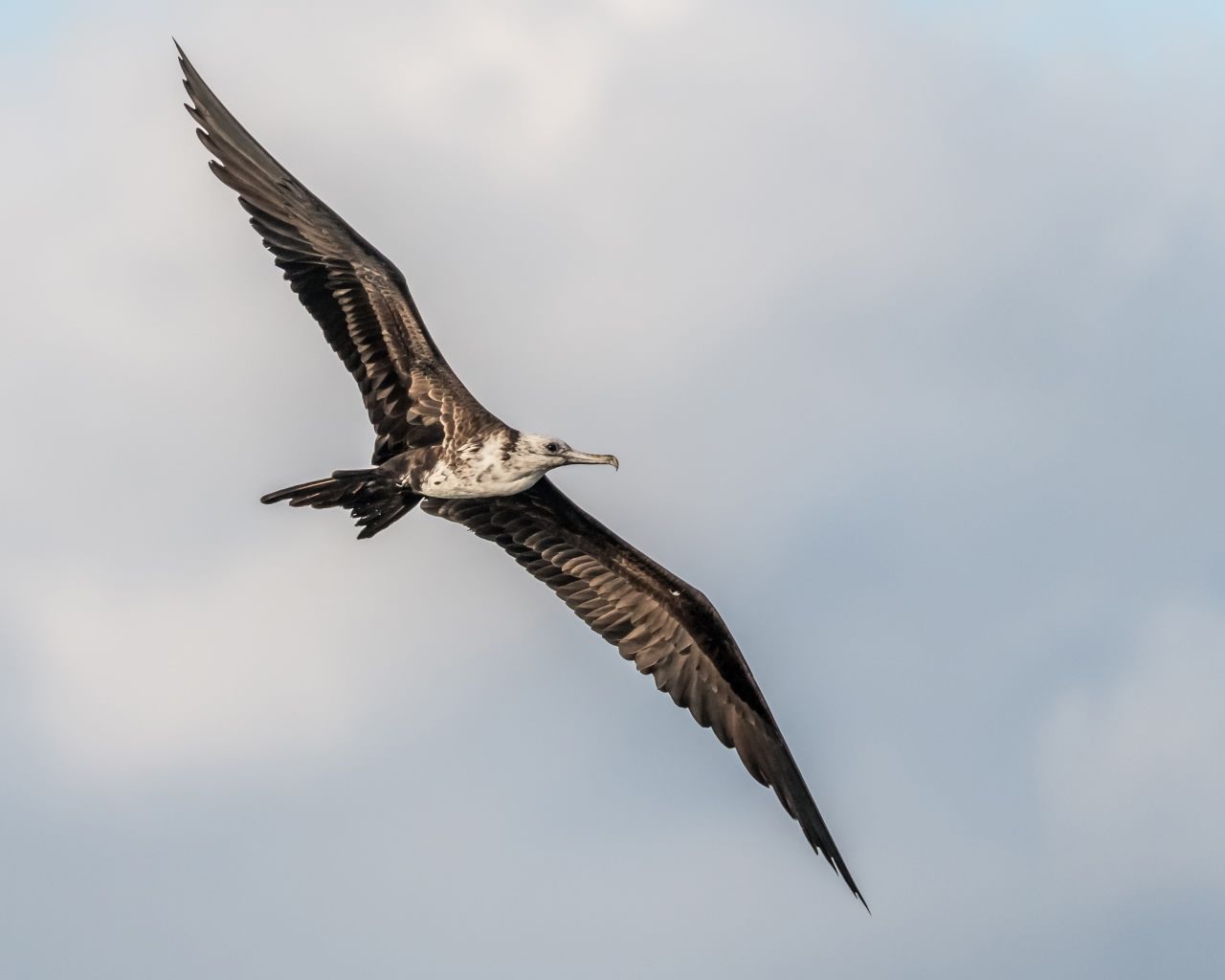“Frigatebirds don’t nest anywhere on the Treasure Coast. They only nest on the Dry Tortugas.” That’s the message I have heard ever since we started coming to the Treasure Coast of Florida, (Indian River, St Lucie and Martin Counties, Vero Beach, Fort Pierce and Stuart, for those readers unfamiliar with that area of east coast Florida) in the early1990s even though we saw Magnificent Frigatebirds flying along the coast regularly.
On March 14, 2011, I was fortunate enough to take a boat trip to a small mangrove island on the west side of the Indian River just off Sewall’s Point in Martin County, where male Magnificent Frigatebirds were displaying in full red throat regalia, obviously trying to entice females into breeding activity. Note the envious male with the deflated throat (gular) sac eyeing the magnificent performer. While there were numerous Frigatebirds, including males, females and juveniles, there was no evidence of nesting there then, and unfortunately, I was not able to get back to that island again later that year, or any intervening occasion until April 16th of this year, 2019.
Upon arrival at the island Frigatebird activity was immediately evident, as several were perched in trees (2) and there were numerous birds flying around the island. Curiously, all were either males (3) or juveniles (4 and 5). I took over 800 photos of Magnificent Frigatebirds that evening but did not have one single photo of a female. Nor was there any evidence of displaying or nesting activity. While I don’t know exactly why we saw only males and juveniles, I surmise that we were observing non-breeding males, or bachelors and teenagers.
Magnificent Frigatebirds are most adept fliers and gain many of their meals by harassing other sea birds until they relinquish the fish they have caught, which the Frigatebird will then snatch right out of the air after the hapless victim has dropped its catch. However, Frigatebirds are also able to catch fish on their own with their long hooked beaks, snatching fish or squid close to the ocean surface without ever getting a single feather wet. They have short legs and very small feet and consequently never walk or swim. Another unique feature of Magnificent Frigatebirds is the fact that while males will bring the nesting materials for the female to build the nest, the males will abandon the female and their young offspring in order to do a second nesting with a second female that same year. Thus, females do all of the chick raising, which may actually last for up to a full year, causing females to breed and nest only once every other year.
While watching the Frigatebirds effortless soaring over the small mangrove island was indeed fascinating, the most interesting aspect of the 2019 boat trip did not occur until I got home and reviewed my photos. A “Great Egret” was displaying and I took a number of shots of it to add to the massive collection of displaying Great Egret photos that I already have.
Except that when I closely examined the photos, the bird turned out to be the much rarer white morph of the Great Blue Heron in breeding plumage, a sight I had never seen before. (6) Note the Heron’s breeding blue eye lores instead of the Great Egret’s green breeding lores, and the pink legs instead of the Great Egret’s black legs. Finally, the massive all yellow bill is another indicator, as the Great Egret’s smaller bill and black upper mandible in its breeding plumage are also distinctive. When we returned to the boat ramp under the Stuart bridge a pair of Least Terns was working the shallows along the shore providing us with one more unexpected surprise for the trip. (7 and 8)
Much as I would have liked to prove the “no Frigatebird nesting” message wrong, I have come away once more with no evidence to refute that claim. In fact, upon checking with Mr. Google I have learned that indeed the Dry Tortugas does seem to be the only place that Magnificent Frigatebirds nest in the United States.
Of course, waiting eight years to check the Indian River island again did not increase my odds of possibly finding an aberrant incident of nesting which, who knows, may have occurred what with all the obvious breeding behavior observed on that March 2011 visit. Perhaps the real answer is to seek a “sneak and peak” warrant to set up monitoring cameras like the police use to find terrorist or illicit sex activity. Well, doesn’t Frigatebird breeding activity fall into one of those categories?
For more information on Magnificent Frigatebirds, see: birdsna.org/Species-Account/bna/species/magfri/introduction and www.allaboutbirds.org/guide/Magnificent_Frigatebird/lifehistory#; and www.audubon.org/field-guide/bird/magnificent-frigatebird.
For a discussion on the white Great Blue Heron see: www.sibleyguides.com/2007/11/great-white-heron-not-just-a-color-morph/.








